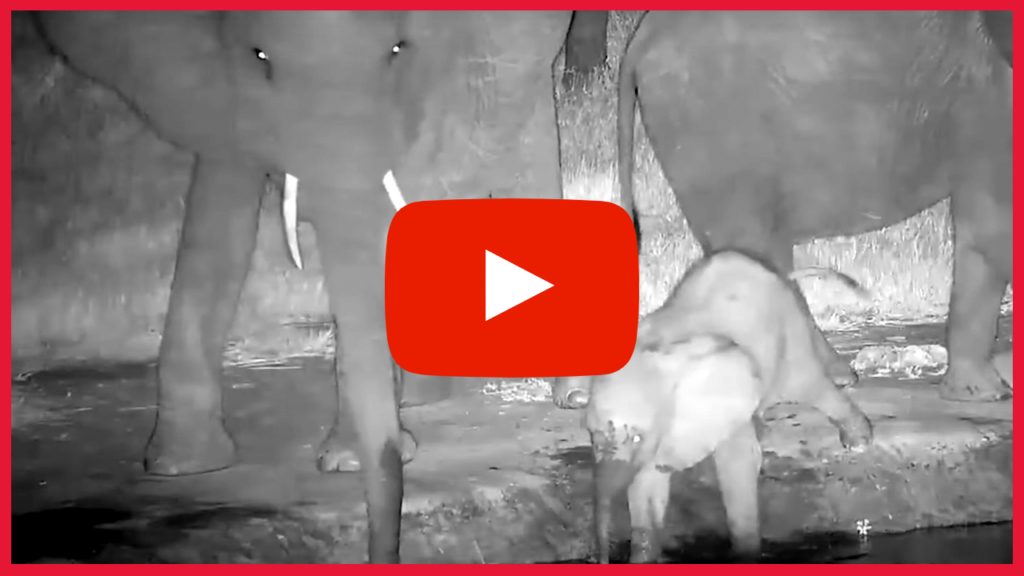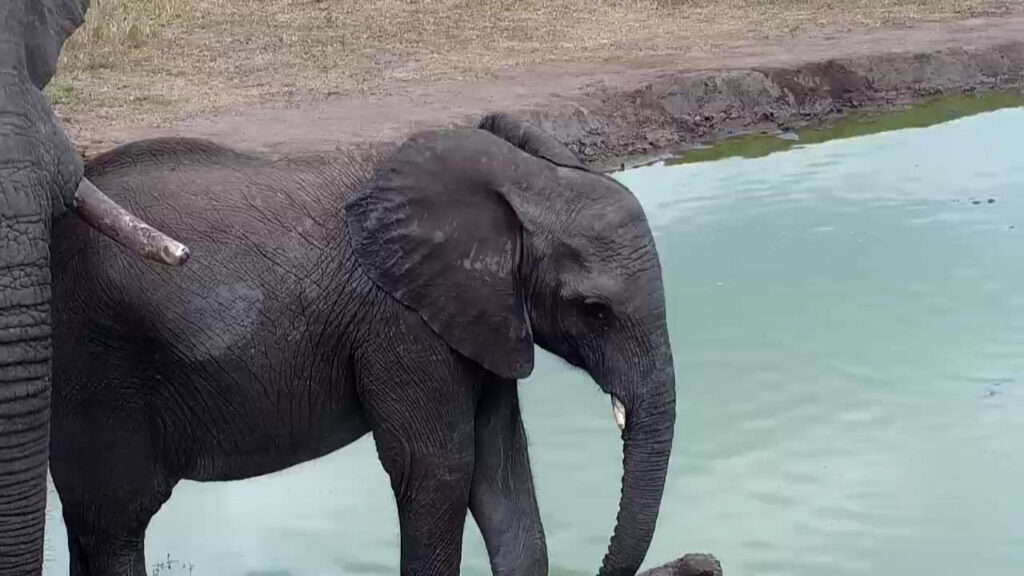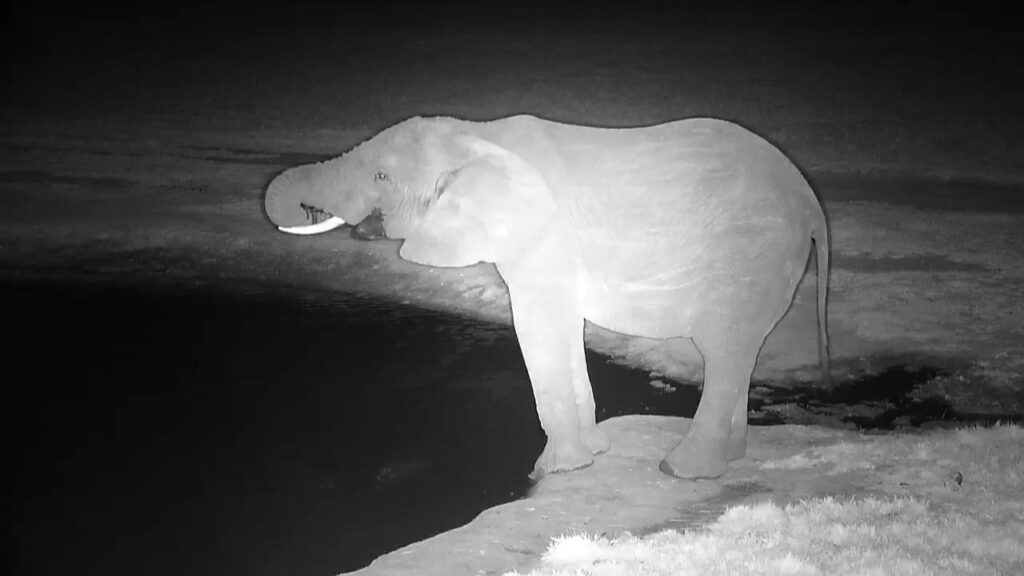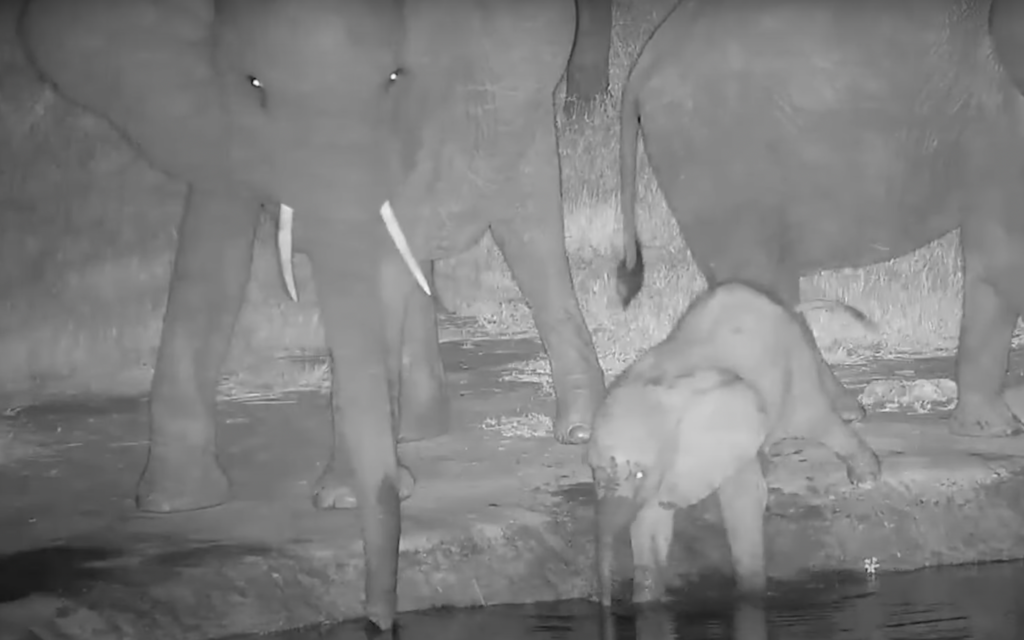
A cute baby elephant is learning how to properly use their trunk to drink from a waterhole.
Sabi Sand
The Sabi Sand Nature Reserve shares a 50km unfenced border with Kruger National Park and spans 65 000 hectares. A number of species roam Sabi Sand, including the big five – rhino, elephants, buffalo, leopards and lions.

Nkorho Bush Lodge is located in the Sabi Sand, known as the the Jewel of Africa. The Sabi sands is world-renowned for excellent leopard viewing and they are a frequent visitor to the Nkhoro waterhole. You’ll also see lions, elephant, giraffe, cheetah, hyena, and a variety of antelope species.
Baby Elephants
After a gestation period of 22 months, cows give birth to a single calf, or twins on rare occasions. At birth the calf weighs 100 to 120 kg. Calves under a year old are able to pass under mom’s body and have little control of their trunks which they wield around clumsily.

So how do elephants drink?

African elephants are reliant on water; large adults may drink as much as 225 L of water per day, they are also quite picky about the water they drink and, in times of drought, will prefer to dig for water in dry riverbeds than drink muddy water. An elephant’s trunk may hold as much as 10 L of water.

This cute little baby elephant is still struggling to drink water. Using their trunk, they attempt to suck it up, but it looks like they just splash it around a bit. The elephant then gets into the water to get closer. And after struggling for a few minutes the baby elephant leaves the water, rather sheepishly looking for some comfort from mom.





